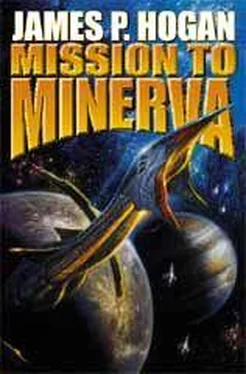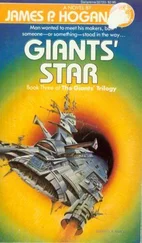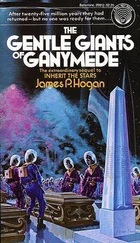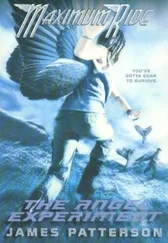James P. Hogan
Mission to Minerva
By the fourth decade of the twenty-first century, the nations of Earth had finally resolved or learned to live with the differences that had made so much of their history a story of exploitation and conflict. A major expression of the new spirit of cooperation and optimism toward the future took the form of a joint program of Solar System exploration carried out under the direction of a Space Arm formed as part of the UN. With its redirection of the resources and industries that had once served a bloated defense sector, the program was seen as a triumph of the unifying power of technology and reason, and a prelude to reaching outward toward the stars. As permanent bases appeared on the Moon and Mars, and manned mission ships reached the outer planets, it was confidently assumed that the sciences responsible for such spectacular success were thereby shown to form a solidly based foundation for the continuing expansion of human knowledge. The basic belief structure was secure. While the universe undoubtedly had more revelations and surprises to deliver, the body of fact that had been established was impregnable to any major need in the way of revision.
Such moments of blissful self-assurance invariably come immediately before the biggest tumbles. In just a few short years, a series of stupefying discoveries not only added an entire new dimension to the history of the Solar System, but uncovered a strange, totally unanticipated story of the origins of the human race itself.
Twenty-five million years before the present time, a race of nonviolent, eight-foot-tall giants had flourished across the Solar System and surpassed everything that humankind had achieved. The "Ganymeans"-so-called when the first indication of their existence was discovered in the form of a wrecked spacecraft buried under the ice of Ganymede, largest of the Jovian moons-had originated on a planet christened Minerva, that had once occupied the position between Mars and Jupiter. By the time the Ganymean civilization reached an advanced stage, climatic conditions on Minerva were deteriorating. As would be expected, their voyages of discovery had brought them to Earth, from where they transported large numbers of plant and animal forms from the late Oligocene-early Miocene period back to their own world as part of a large-scale bioengineering research project to combat the problem. Terran life enjoyed a generally greater toxic resistance than that possessed by the Ganymeans, and their hope was to incorporate the appropriate genetic structures into their own makeup in order to render themselves tolerant to altering Minerva's atmosphere in a way that would enhance its natural greenhouse mechanism. These efforts failed, however, and the Ganymeans migrated to what would later come to be called the Giants' Star, located twenty light-years from Earth in the direction of the constellation of Taurus.
In the millions of years that followed, the imported terrestrial animals left on Minerva replaced most of the native Minervan forms, which owing to a peculiarity of early Minervan biology that precluded the emergence of land-dwelling carnivores, were unable to compete effectively. The terrestrial forms included a population of primates as advanced as anything existing on Earth at the time, which in addition had undergone genetic modification in the course of the Ganymean experimental program. Fifty thousand years before the present time, while the various hominid lines developing on Earth were still at stone-using stages of culture, a second advanced, spacegoing race had already appeared on Minerva as the first version of modern Man. They were given the name "Lunarians," after evidence of their existence came to light in the course of twenty-first century lunar exploration. (See Inherit the Stars.)
At the time of the emergence of the Lunarians, varying solar conditions were bringing the onset of the most recent ice age on Earth, while the even greater effect on Minerva threatened to render the planet uninhabitable. The Lunarians responded with a concerted effort to develop their space and industrial technologies to a level that would permit mass migration to the more hospitable climate of Earth. But, as with the Ganymeans before them, the ambitious plan came to nothing. When the Lunarians were practically within reach of their goal, the cooperative spirit in which they had worked for generations broke down with the polarization of their civilization into two superpowers, Cerios and Lambia. Resources that could have been concentrated on saving the race were squandered instead on a ruinous military rivalry. The result was a cataclysmic planetwide war, in the course of which Minerva was destroyed.
The Ganymean culture, in the meantime, had entered a long period of stagnation brought about by the unanticipated effects of advancing biological science to the point of prolonging life practically indefinitely. When the consequences became clear, they took a decision to revert to their natural condition and accept mortality as the price of experiencing a life enriched by motivation and change. By the time of the events on Minerva, they had established a thriving interstellar civilization centered on the planet Thurien of the Giants' Star system. The Thuriens were never comfortable with what they regarded their ancestors' abandonment of a genetically mutated sapient species left to take its chances in the survival arena of Minerva, and followed the subsequent emergence of the Lunarians with a mixture of guilt and increasing awe. But when it all ended in catastrophe, the Thuriens relaxed the policy of nonintervention that they had been observing and sent a rescue mission to save the survivors. Gravitational upheavals caused by the emergency methods used to transport the Thurien ships threw what remained of Minerva into an eccentric outer orbit to become Pluto, while the smaller debris dispersed under Jupiter's tidal effects as the Asteroids. Minerva's orphaned moon fell inward toward the Sun and was later captured by Earth, which until then had existed as a solitary body.
Even after all their experiences and the loss of their world, hostility between the Cerians and the Lambians persisted, making them incapable of uniting to rebuild their culture. The Lambians went back with the Thuriens and were installed on a planet called Jevlen, where they grew to become a fully human element of the Thurien civilization. The Cerians, at their own request, were returned to the world of their origins, Earth, only to be almost overwhelmed by the climatic and tidal devastation caused by the arrival of Minerva's moon. Their remnants fell back into barbarism, struggling for millennia on the verge of extinction. Apart from myths handed down from antiquity, the meanings of which were forgotten, all memory of their origins was lost. Only in modern times, when they at last mastered space again and ventured outward to find the traces of what had gone before, were they able to piece parts of the story together. The rest was added when a freak occurrence reestablished contact between the human inhabitants of modern Earth and the ancient Ganymean race that had created them in the form of their Lunarian ancestors. (See The Gentle Giants of Ganymede.)
The Jevlenese never ceased regarding themselves as Lambians, and the Terrans as ongoing rivals who would challenge them again if the opportunity arose. As part of a plan to eliminate the perceived threat, they inaugurated a campaign to retard the progress of Earth toward rediscovery of the sciences, while they themselves absorbed Thurien technology and gained autonomy over their own affairs. Fully human in form, they obstructed Earth's development by infiltrating agents throughout history to spread irrational beliefs and found cults of unreason, diverting energies from the path to reacquiring true knowledge.
Читать дальше











